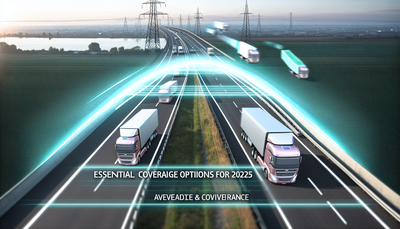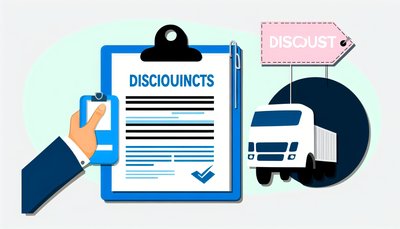Are You Fully Covered? Understanding Truck Insurance Policies

Are You Fully Covered? Understanding Truck Insurance Policies
When it comes to operating a truck—whether for business or personal use—understanding your insurance coverage is crucial. But what does "fully covered" actually mean in the world of truck insurance policies? Let’s break down the essentials so you can hit the road with confidence.
Why Truck Insurance Is Different
Truck insurance isn’t a one-size-fits-all solution. Trucks, especially commercial ones, come with unique risks and responsibilities. The size, purpose, and usage of the vehicle all influence the type of insurance required. Unlike standard auto insurance, truck insurance often involves more complex factors such as cargo coverage, liability limits, and federal/state regulations.
What Does Full Coverage Really Mean?
The term “full coverage” gets thrown around a lot, but it’s important to understand that it doesn’t mean "everything is covered." Instead, it typically includes:
1. Liability Insurance
This covers bodily injury and property damage caused to others. It’s legally required in most jurisdictions and is the foundation of any vehicle protection plan.
2. Collision Coverage
If your truck is damaged in an accident—regardless of who’s at fault—collision coverage helps pay for repairs or replacement.
3. Comprehensive Coverage
This protects against non-collision-related incidents like theft, vandalism, fire, and natural disasters.
4. Uninsured/Underinsured Motorist Coverage
If another driver causes an accident and doesn’t have enough insurance, this coverage helps cover your costs.
Additional Coverage Options for Trucks
Depending on your situation, full coverage might also include:
- Cargo Insurance: Protects the goods you're hauling.
- Trailer Interchange Insurance: Covers physical damage to trailers not owned by you but used under a trailer interchange agreement.
- Non-Trucking Liability (NTL): Covers you when driving your truck for non-business purposes.
- Bobtail Insurance: Applies when you’re driving your truck without a trailer attached.
These options are particularly relevant for owner-operators and commercial drivers.
How to Evaluate Your Needs
To determine if you’re fully covered:
- Assess Your Risks: Consider what kind of cargo you haul, where you drive, and how frequently.
- Know the Legal Requirements: Each state and business contract may have different minimum requirements.
- Talk to a Specialist: Insurance agents who specialize in truck insurance policies can help tailor a plan to your specific needs.
Common Mistakes to Avoid
- Assuming Basic Coverage Is Enough: Minimal policies may save money upfront but leave you exposed.
- Neglecting to Update Your Policy: As your routes or cargo change, your coverage should too.
- Not Reading the Fine Print: Always understand exclusions and limitations in your policy.
Conclusion
Being "fully covered" is about more than checking a box—it’s about ensuring comprehensive vehicle protection tailored to your unique trucking needs. Don’t wait until an incident occurs to find out you’re underinsured. Review your truck insurance policy today and consult a professional to make sure your rig—and your livelihood—are truly protected.
Drive smart. Drive safe. Stay covered.








